(Last updated on 29/10/2025)
Planning to visit Extremadura but don’t know what time of the year to go? Dreading the heat, but seriously tempted to travel in summer anyway?
In this article, aimed at travellers at the trip planning stage, I share some things to bear in mind before travelling to Extremadura in summer and offer suggestions of what to see and do in the region from June to September.
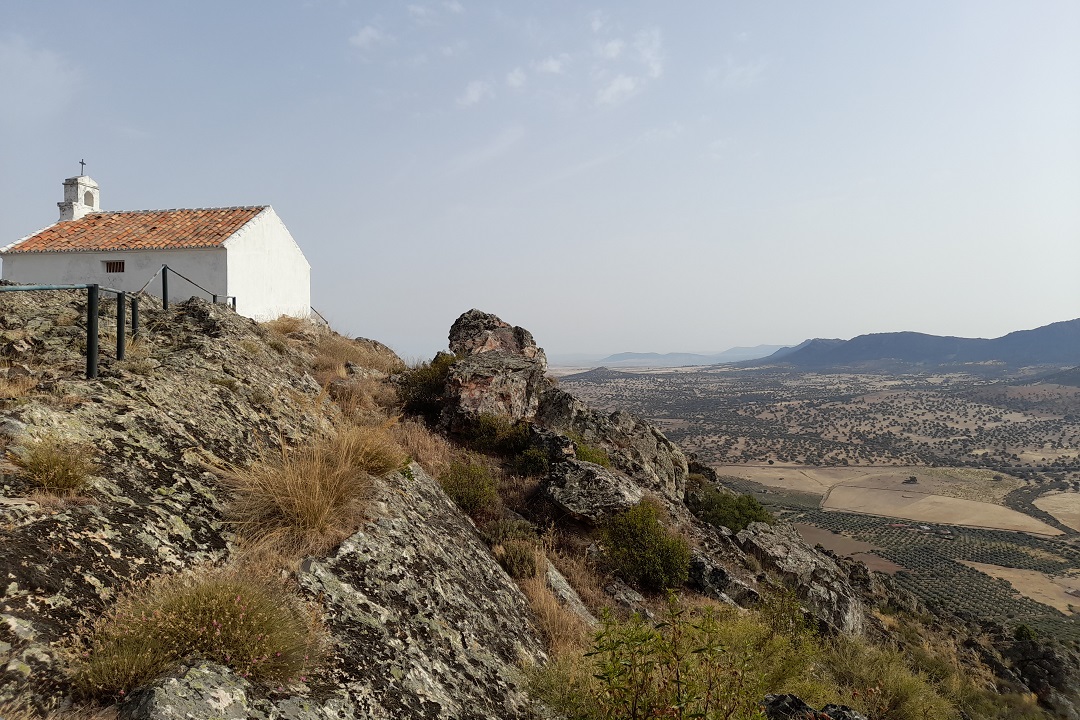
This post contains affiliate links. If you click through and make a purchase, it will generate a small commission for me, at no extra cost for you. Read the full disclosure for more details.
Table of contents
Things to consider when planning a trip to Extremadura in summer
Weather
Temperatures. It’s fair to say that summer (Jun-Sep) temperatures in Extremadura can generally be described as hot or very hot. Traditionally, the hottest time of the year is the last week of July, with temperatures of 40-42 degrees Celsius expected to last for several days in a row in the central areas. However, in the past few years, heat peaks of similar temperatures have occurred throughout August (and I even remember a similar peak several years ago at the end of May).
In any case, temperatures can vary a little depending on the area and altitude. See some examples below:
|
|
Hervás |
Mérida |
Jerez de los Caballeros |
|
Area |
Northern – Valle del Ambroz |
Central |
Southern – Sierra Suroeste |
|
Altitude |
688m |
224m |
506m |
|
Average minimum temperature |
10-15 ºC |
15-18 ºC |
13-17 ºC |
|
Average maximum temperature |
23-31 ºC |
28-35 ºC |
27-33 ºC |
Sunrise is relatively late. See the Mérida-London comparison below for reference:
| 14 June | 31 July | 30 September | |
| Mérida | 06:59 | 07:25 | 08:20 |
| London | 04:42 | 05:22 | 06:59 |
The big difference between the minimum and the maximum daily temperature is irrelevant when it comes to choose your daily outfit. It’s going to be hot, so it’s 100% summer clothing weather. From mid-August onwards, you might need a light cardigan in the evenings, but other than that, the lighter, the looser and the more comfortable your clothes, the better.
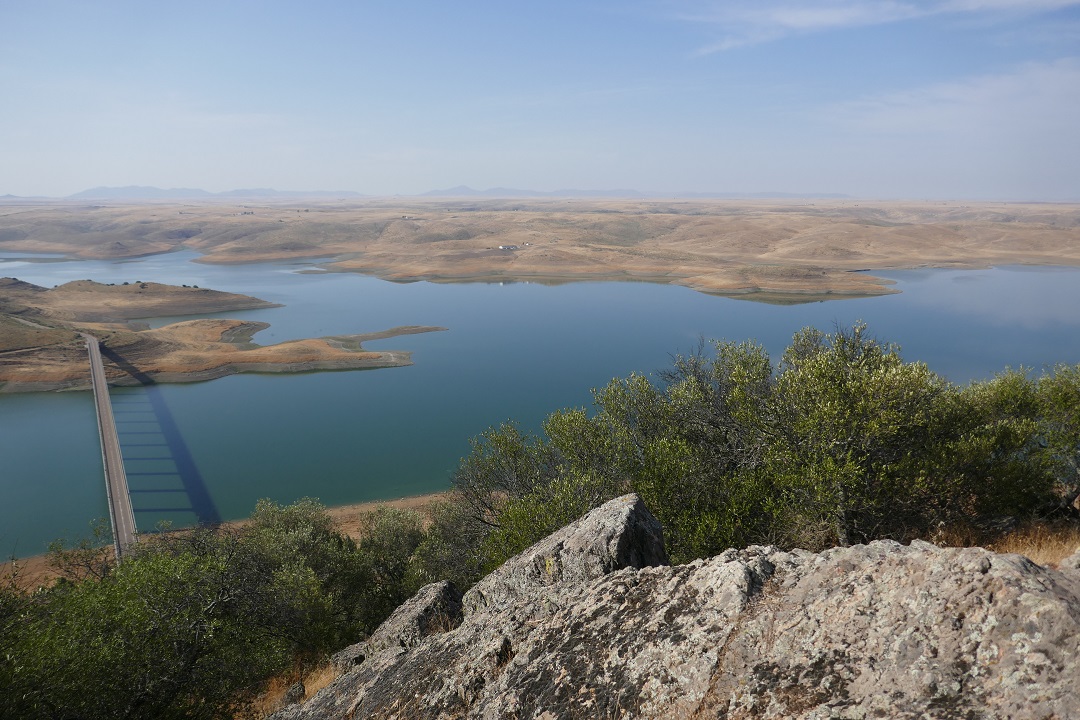
Rain. Extremadura normally goes by without rain for about two and a half months (from mid-June to the end of August) although some years, the dry spell can last for well over three months. September sees the first rain after the dry spell, usually as sudden, intense downpours and thundershowers.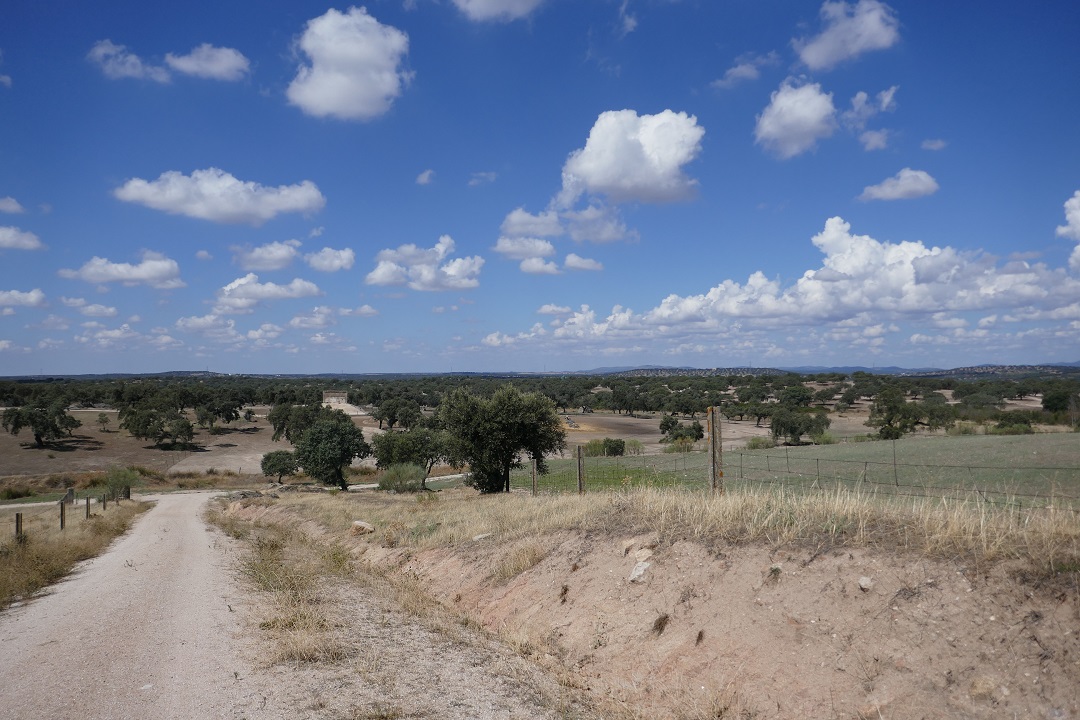
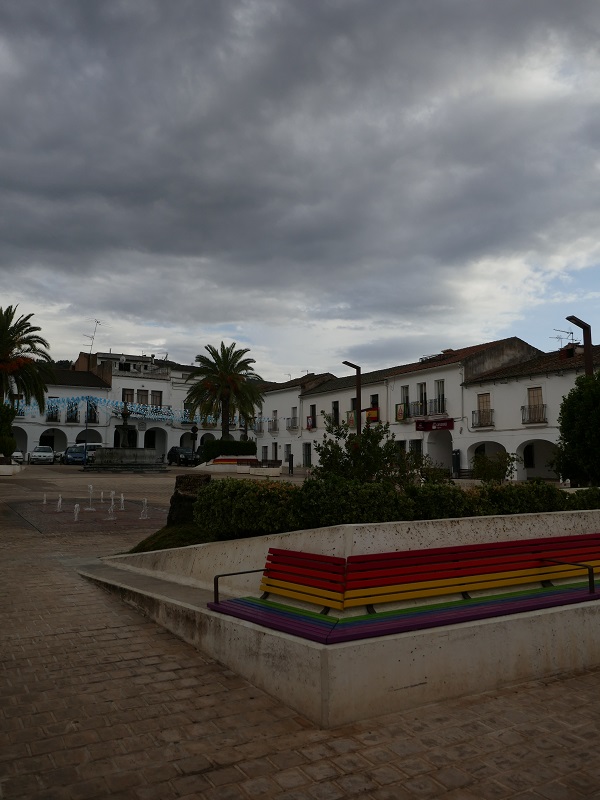
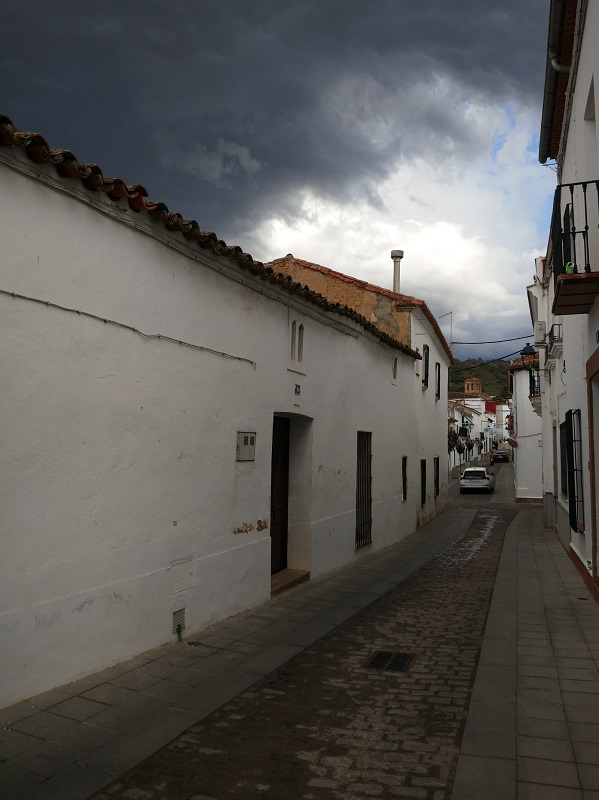
Sights
Generally speaking, Extremadura ranks low in terms of adequately marketing sights, which can be quite frustrating for travellers coming from more customer-focused and digitally-aware countries such as the UK (as a long-term UK-resident extremeña, I can vouch for that). Things are changing slowly as Extremadura gains more international recognition as a travel destination, but some things are still pretty common:
• Official regional or local travel websites publishing huge chunks of wiki-type texts full of historical details about a sight, which still lack basic practical information such as opening times, how to get there, or contact details.
• Sights relying exclusively on a Facebook page (sometimes a profile) as their only online presence, yet still failing to make the basic practical information available or update their opening times.
• Last-minute changes to a sight’s opening times not being communicated anywhere online but only on a piece of paper stuck to the main door of the said sight.
• Wrong or not-updated opening times on Google.
• Having to call a number to find out basic information unavailable on their website or social media channels.
• Vague opening times, mentioning ‘summer’ or ‘winter’ opening times, without mentioning the exact dates.
• Only disclosing the opening times for the current season, making it difficult to have reliable, up-to-date information more than three months before a trip.
• Poor (and often automated) translations everywhere.
Don’t stress over booking tickets in advance. There’s only so much planning you can do ahead of your trip and tickets are rarely going to be sold out in the low season. Make a list of sights you’d like to see and include any website, social media or contact details available; then confirm the opening times the week before your trip. WhatsApp is widely used and often is the most reliable way to check opening times. If there’s a phone number starting with (+34) 6 (a mobile) available, send a WhatsApp message.
July-August is high season
Despite the heat, July and August are considered high season months in Extremadura for tourism purposes. Since children are off school, summer weekends is when local families head out to the natural swimming pools. It’s also when émigré families return to their hometowns and villages for the holidays. And the summer event calendar in Extremadura is full of fairs, festivals and celebrations, some of them drawing visitors from all over Spain.
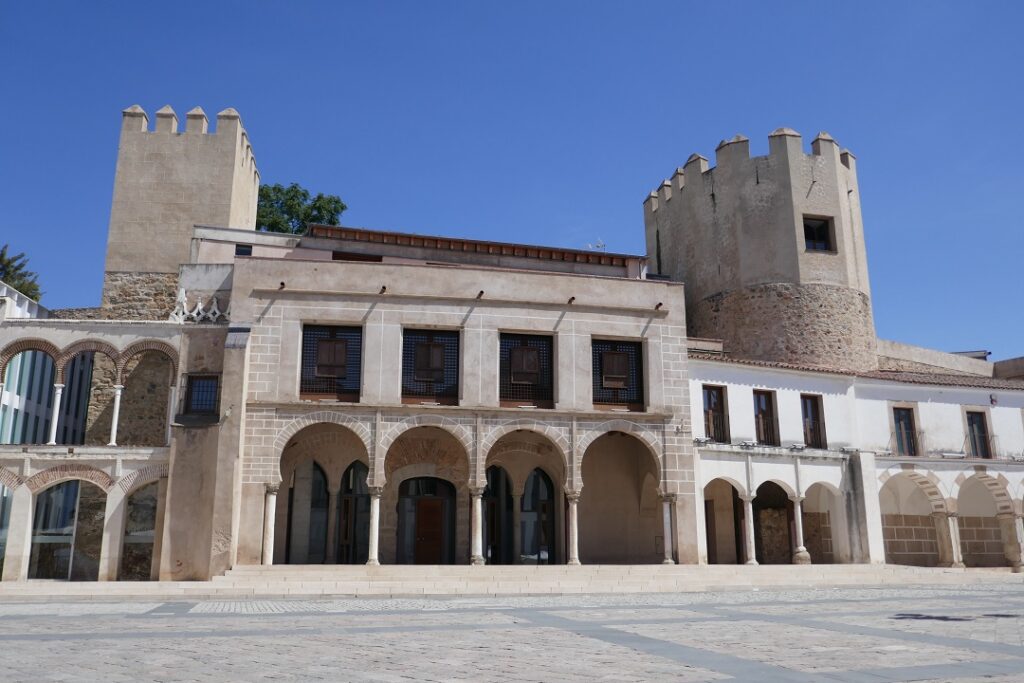
Is summer a good time to visit Extremadura?
Deciding whether visiting Extremadura in summer is a good idea will depend on your priorities, plans and interests as a traveller.
Here are some personal thoughts:
As a long-term UK resident, I’m no longer used to or comfortable with the summer heat and I normally avoid visiting Extremadura in July and August. I find that the summer period (mid-June to mid-September) is not suitable for walking, visiting castles or generally doing intense sightseeing outdoors. However, that doesn’t mean completely disregarding the summer months for travelling to Extremadura, because there are some advantages and nice things to do. But it does require adapting your travel style, your plans and your timings, and to learn to slow down and enjoy the evenings and nights.
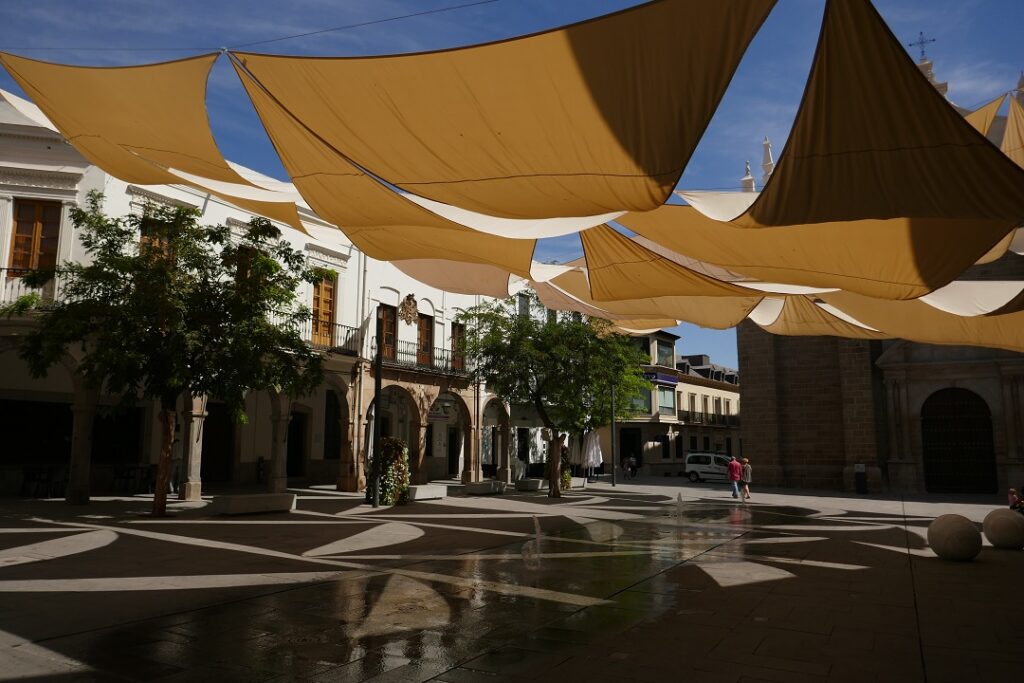
These are my favourite things about travelling to Extremadura in summer:
• Slowing down. High temperatures during the central hours of the day force you to slow down. Sights, monuments and shops close from 2pm to 5pm/5.30pm anyway, so see this as a chance to take things easy and relax. Keep your daily bucket list light – one main thing in the morning and one main thing in the early evening. And relax in between.
• Long, warm evenings. People (not working) spend the afternoon indoors and only venture out again when the sun is going down, with anytime before 7-8pm considered ‘too early, too hot’, unless you absolutely must. That’s when you go out and do some shopping, take your children to the park and go out for a drink or two before dinner. I personally love the really dark, really clear summer skies in Extremadura; it’s a fantastic place for stargazing.
Things to do in Extremadura in summer
Wild swimming
Yes, Extremadura is hot in summer, but there’s plenty of opportunities for wild swimming throughout the region, be it in natural pools, natural swimming pools and reservoirs. Natural swimming pools (piscinas naturales, man-made structures on rivers) and the designated beach areas in reservoirs usually open around mid-June and close at the beginning of September. Outside this period, however, you can wild swim in smaller river pools and ponds.
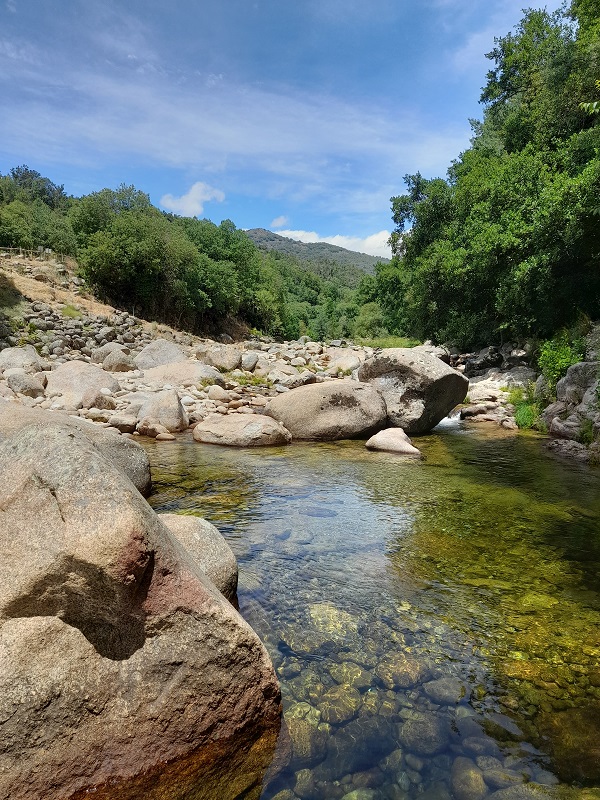
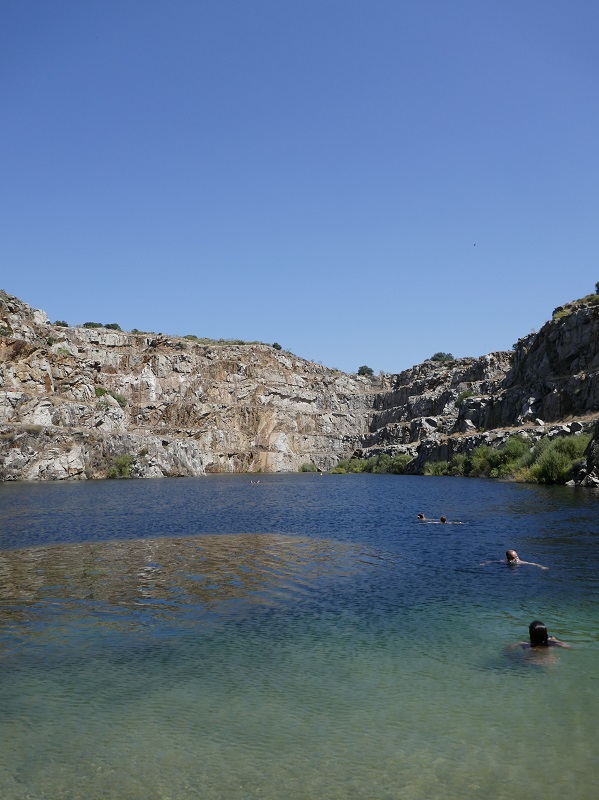
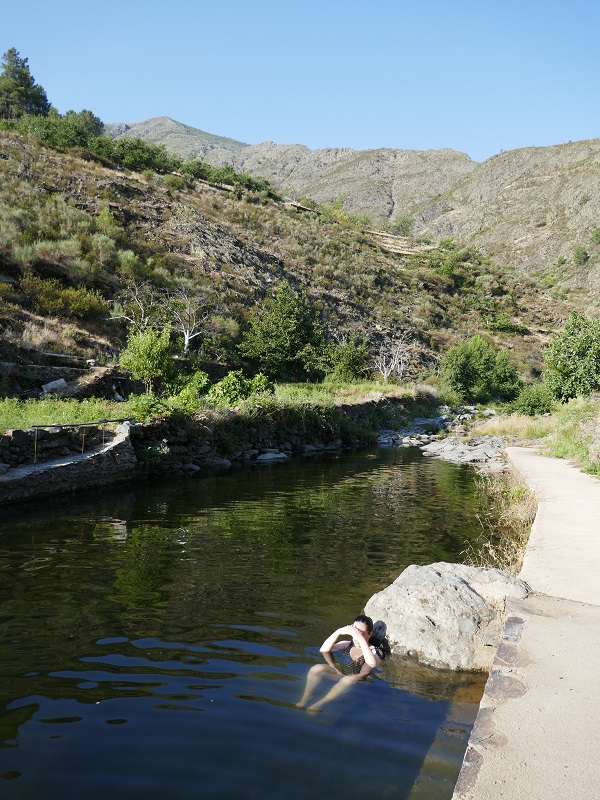
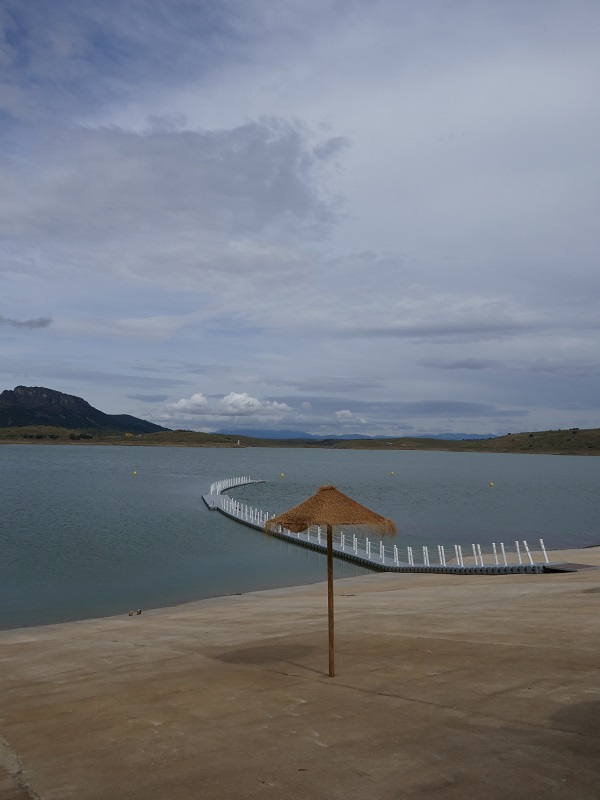
Summer events
Mérida’s International Classic Theatre Festival, the oldest of its kind in Spain, is hosted annually in summer at the three Roman theatres in Extremadura (in Mérida, Medellín, and Regina), with the vast majority of plays taking place in Teatro Romano de Mérida. Several plays are also hosted at the Roman city of Cáparra and in Madrid. The festival starts at the end of June and ends at the end of August. The festival programme is usually announced in early spring and tickets can be purchased online.
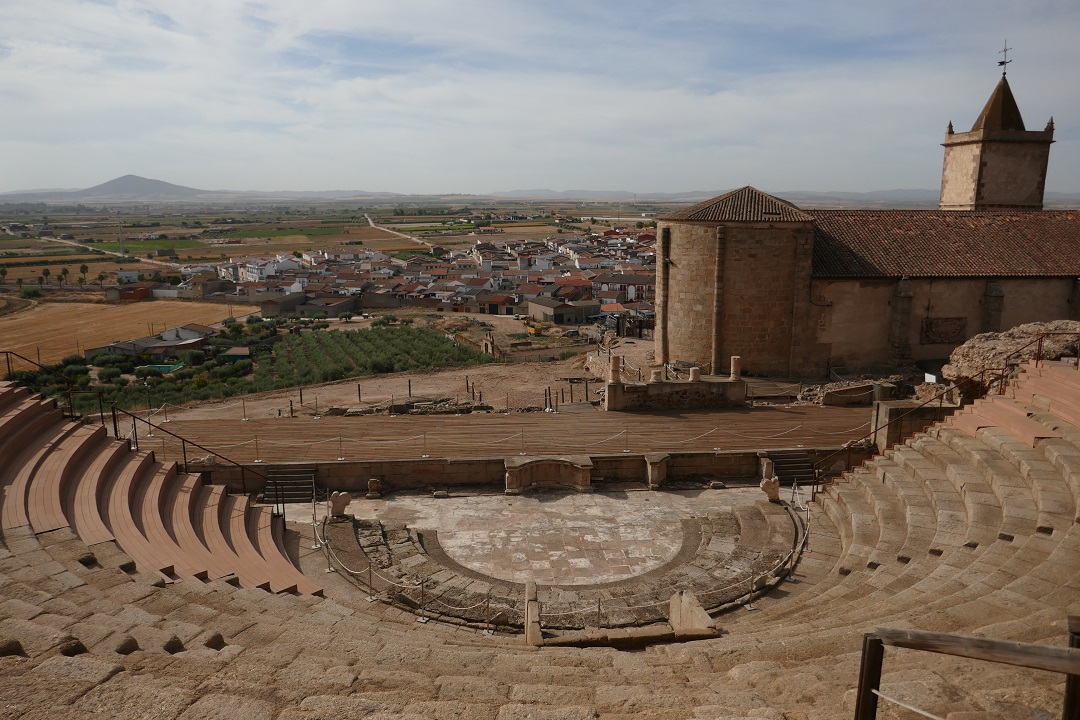
Cerecera. Valle del Jerte, in northern Cáceres province, turns white during the short cherry blossom (cerezo en flor) season in early spring. Later in the year, you can enjoy the delicious local cherries, as well as join cherry-related activities during the cherry harvest season (cerecera), normally lasting from May to July.
In Plasencia: the first (Monday and) Tuesday in August, Plasencia holds Martes Mayor, celebrating a weekly Tuesday farmers market tradition with numerous stalls selling fruit, vegetables and crafts, food competitions, and music. Plasencia also holds a popular music festival on the last weekend in August.
Other summer events worth mentioning: Los Conversos, taking place in July, celebrates the historic legacy of the Jewish and Christian communities in Hervás with theatre, music and food; Festival Medieval de Alburquerque, taking place in mid-August, hosts historical re-enactments, street performances and parades, and a food and crafts market, all with the imposing Castillo de Luna in the background.
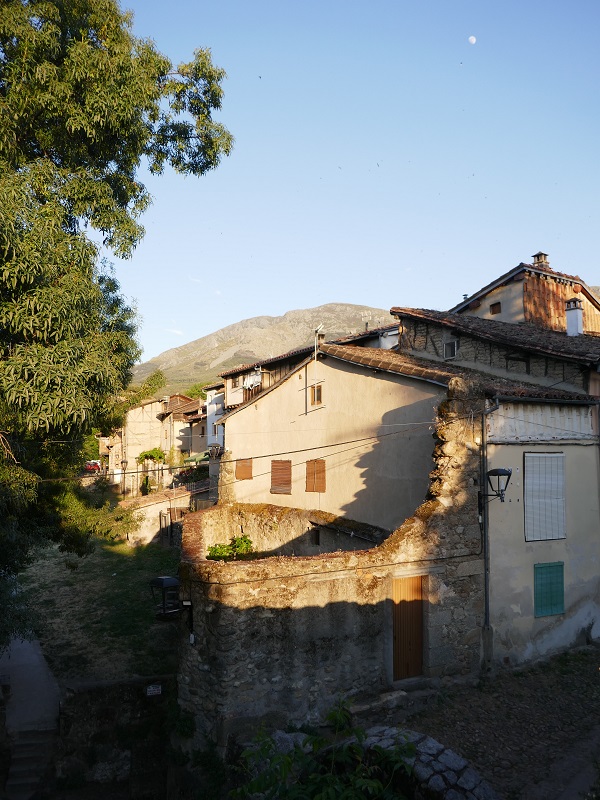
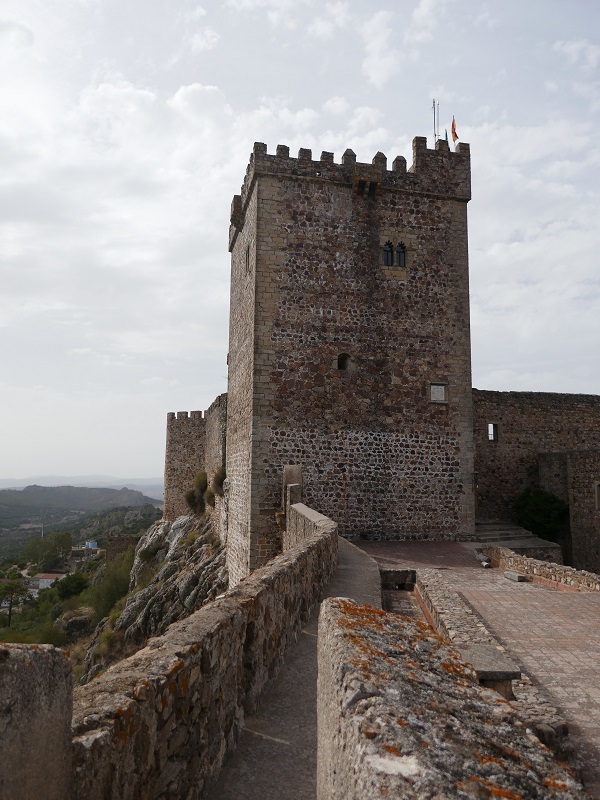
Birdwatching
Extremadura is a great birdwatching destination all year round, so spring is a good time to go, whether you’re looking to spot specific species passing through, or others easily found in the region throughout the year.
Eat local seasonal food
Summer is generally a fantastic time for local seasonal fruit and vegetables, including courgettes, tomatoes, melons, watermelon, strawberries, and stone fruit such as peaches, nectarines, flat peaches, apricots and plums.
Did you know? Around 75% of all tomato in Spain is produced in Extremadura, mainly in the central area along the river Guadiana.
If you visit areas in northern Cáceres province, particularly Valle del Jerte and La Vera, look out for any cherry-based dish in local restaurants. Cherries are in season from May to July and are used in all sorts of dishes: from cold soups, starters and salads, to delicious sauces for meaty mains, to cakes and ice-creams.
If you want to try fresh cherries, look out for the ‘Cereza del Jerte’ indication certifying five cherry varieties native to the Valle del Jerte, including the famed stemless picota cherries.
When it comes to eating in Extremadura in summer, here are two personal suggestions:
Buy local, fresh produce
If you’re planning an Extremadura road trip, support local businesses by buying fresh fruit in independent shops and street markets in small towns and villages. Best enjoyed as part of a picnic between swims.
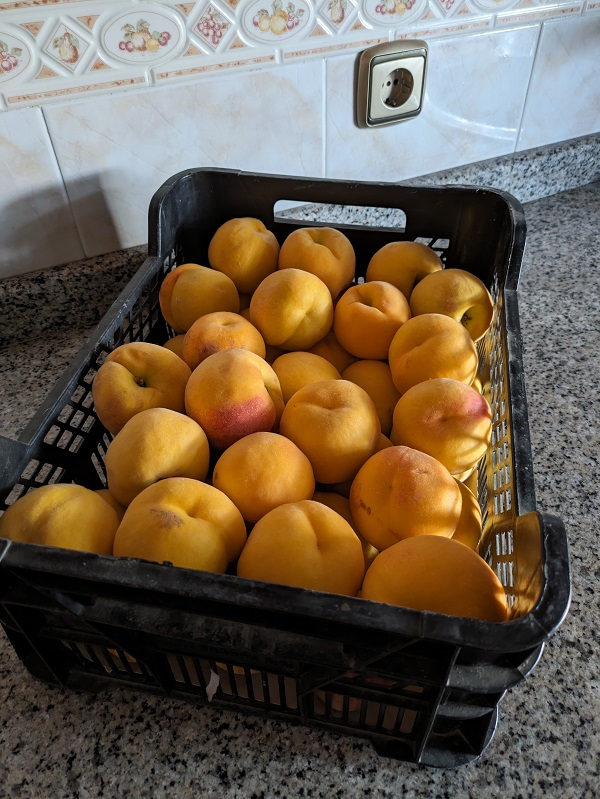
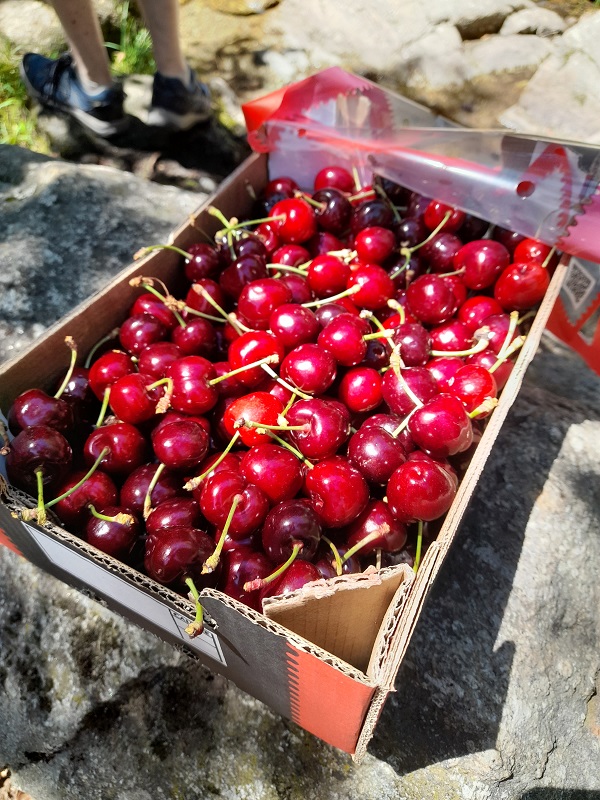
Look out for summer dishes
Choose dishes made with seasonal fruit and vegetables. For example, look out for traditional or local variations of the popular gazpacho cold tomato soup.
Some salad options include
Ensalada hurdana (also called ensalada de limón), a traditional salad from Las Hurdes made with garlic, sliced orange and orange juice, sliced lemon and lemon juice, chorizo, Iberian ham, and a fried egg.
Cojondongo, a cold fruit and veg ‘soup’ with red onion, tomatoes, peppers, apple, orange and boiled egg.
Zorongollo, a roasted pepper salad.
Ensalada rin ran, a traditional salad from La Vera, made with tomatoes, green peppers, onion, and paprika.
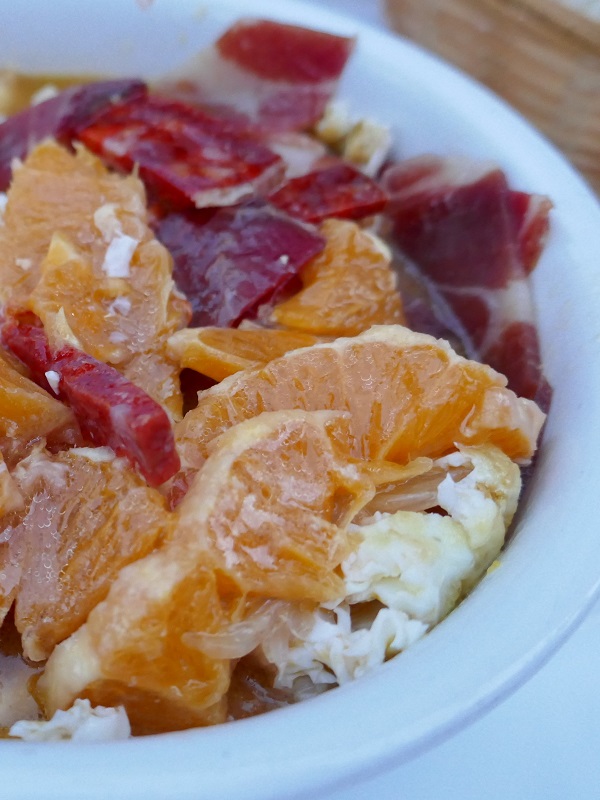
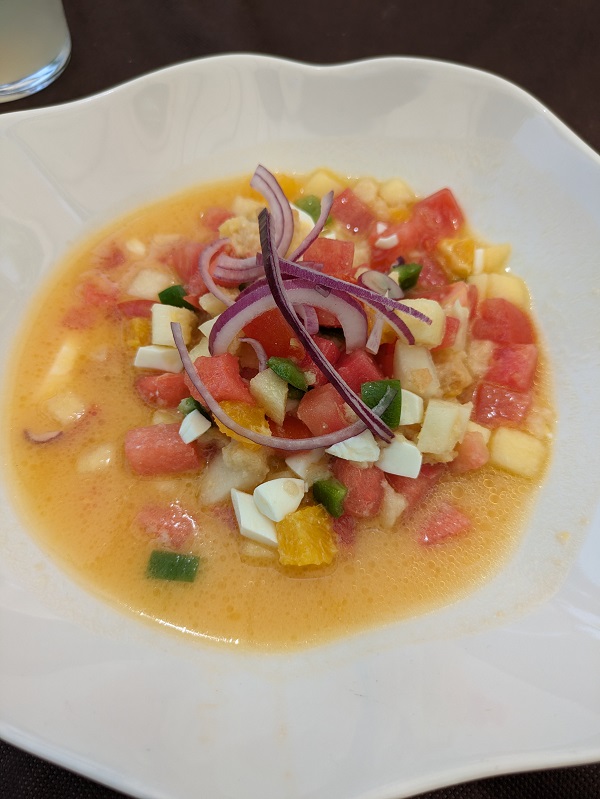
Choose lighter variations of hearty dishes
When in Extremadura, diet permitting, you should try Ibérico pork, whether it’s ham or other cold meats, or pork dishes. The region has lots of comfort, hearty dishes and some of them might be a bit heavy to the stomach in hot weather. If you travel in summer and find it too hot, you might want to stay off offal, stews and fried meat. Choose chargrilled (a la brasa) or grilled (a la plancha) pork dishes instead.
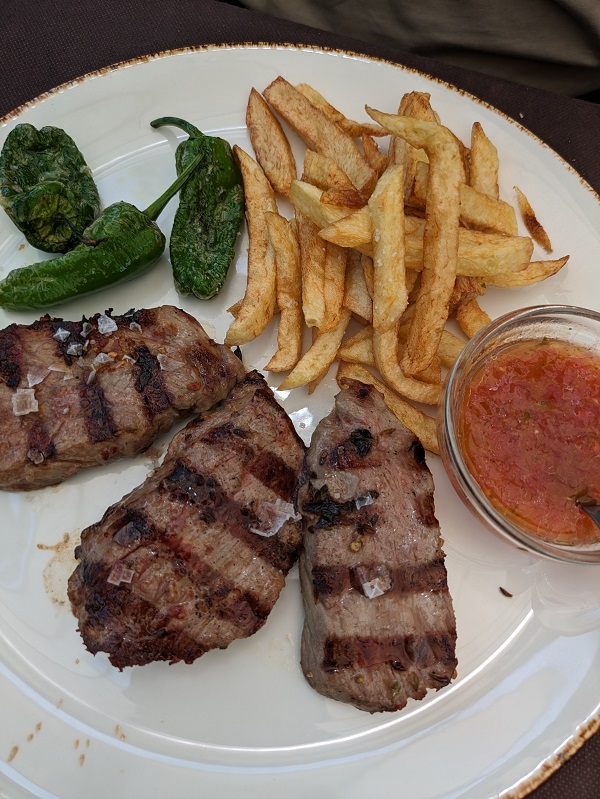
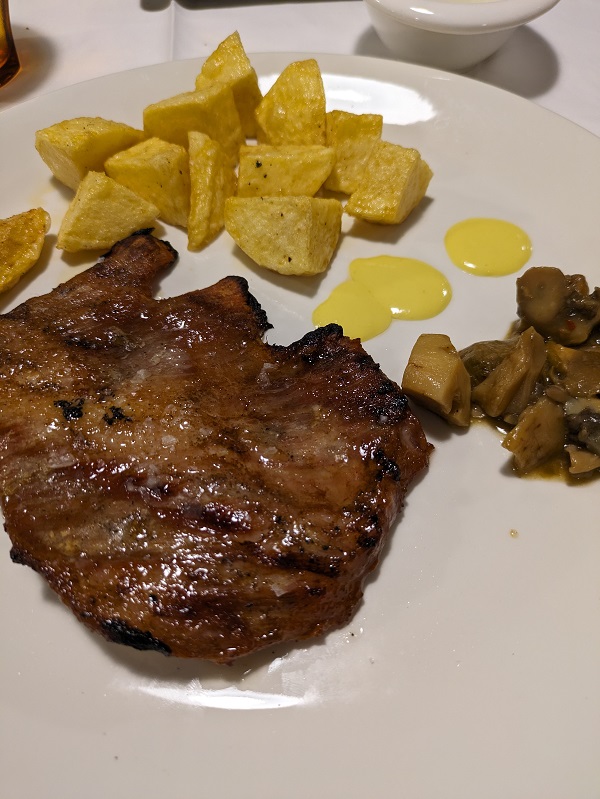
You might want to eat at Hospederías – four-star hotels located in historic buildings in rural Extremadura with on-site restaurants. Their affordable set and à la carte menus include traditional recipes with a twist using local, seasonal ingredients. Moreover, all Hospederías have a swimming pool.
Other articles about when to go to Extremadura:
This content is protected by copyright and belongs exclusively to Irene Corchado Resmella. To know exactly what this means, read the 'Copyright' section in the Website terms of use.

Irene Corchado Resmella
Hi! I’m Irene (/ee-REH-neh/). Long since settled in the UK, I explore my Spanish home region of Extremadura with an inquisitive mind, a sharp eye, and the duality that comes with being both a local and a visitor. Then I write about it here to help you discover this beautiful yet overlooked part of Spain. If you have any questions after reading this article, submit a comment below! Read more about me.
